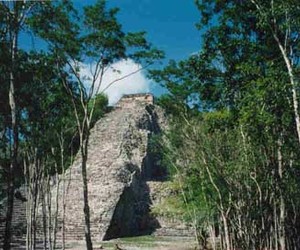Mexican History

In Historia de la Literature Nahuatl (Mexico, D.F. 1971), the late Mexican scholar A. Garibay included a chapter entitled “Poesía Épica” (Epic Poetry) in which he gave a list of texts in Nahuatl (Classical Aztec) that he believed represented authentic Mesoamerican epic poetry and saga. Garibay was attacked on the grounds that he attempted to make the Nahuatl texts look like classical Greek models by cutting up the texts into a versified form, introducing rhythm, and then translating to fit his own personal conception of Aztec civilization.
Consequently both Garibay and his successor M. Leon-Portilla have been severely criticized for their translations, especially the controversial Nahuatl song-poems. Nevertheless, M. Leon-Portilla has continued Garibay’s work of translating and interpreting the Nahuatl texts that were produced in Roman transcription after the Conquest of Mexico in 1521.
Critics of the Garibay/Leon-Portilla approach, such as G. Payas and A. Segala, argue that the two Mexican scholars have in fact “created” a literature for the ancient Aztecs.
The basic charge against the Garibay/Leon-Portilla interpretation is that they forced the Nahuatl texts into a western or European type classical format in order to conform with their preconceived notion that the Aztecs had developed a form of literature worthy of comparison with classical models, such as the Homeric epics Iliad and Odyssey. However, the critics fail to deal directly with the various genres of literature, such as lyric, dramatic, epic etc., either within the Nahuatl texts themselves or in a world context.
Garibay never claimed that the “remnants” of “Epica Nahuatl” (Nahuatl Epic) formed anything like the long sustained narratives of the Homeric epics or the Indian epic Mahabharata or even the shorter Norse Eddas. If there ever was a sustained coherent Nahuatl epic poem or saga it is now in bits and pieces embedded within old chronicles. Therefore, in order to assess Garibay’s conclusions about Nahuatl epic it may be useful to define the terms “epic” and “Asaga” by examining actual epics of the world.
Basically, epics are long narratives with a unifying theme, usually in verse or in a mixed prose/verse style.
Primary epics are epic poems that have been composed without the use of writing, such as the Iliad and Odyssey. Secondary or literary epics are those known to have been written down from the outset, such as Virgil’s Aeneid or Lucretius’ De Rerum Natura (in Latin).
Heroic type epics focus on a main hero, such as Achilles in the Iliad or they may deal with the heroic exploits of a people as in some Mongol epics. Examples of heroic sagas include the Old Irish sagas of the Ulster Cycle and the Icelandic prose tales of the Viking era. However, epic themes may also include shamanism where the hero relies as much on magic as on personal resources, such as the Tibetan Kesar of Ling cycle.
To what extent Nahuatl epic corresponds to this type of epic literature remains to be seen.
There are common themes running throughout the vast field of epic poetry and saga For example, the idea of a Heroic Age lies in the background of most of the world’s epics. Many elements in the Iliad hearken back to the Mycenean period. The Indian epic recalls the battle for Hastinapura (modern Delhi). The Old Irish sagas reflect the Celtic Heroic Age of the second century B.C. in Europe. And in ancient Mexico, the Aztecs looked back to the Heroic Age of their migration from Aztlan to the founding of Mexico-Tenochtitlan.
World epic poetry and saga may be divided thus: Indo-European Epic, Non-Indo-European Epic, and Amerindian Oral and Epic Traditions. Each main section contains epics related by language families, common themes, and similar cultural backgrounds, although there is much overlapping.
Epics and sagas contain both universal elements and particular features. For example, the theme of the cattle raid is common in Indo-European epic poetry and saga. In the Odyssey, Odysseus’ men steal the cattle of the sun. In the Old Irish saga The Cattle Raid of Cooley, the men of Connaught and Ulster fight over a famous bull. And in the fourth book of the Mahabharata, a cattle raid takes place. There are no cattle raids in Mesoamerican epic simply because there were no cows in Middle America before the Europeans arrived.
Indo-European epic poetry and saga comprises a number of sub-categories, such as Greek Epic, Roman Epic, Indo-Iranian Epics, Celtic Heroic Narrative, Romance Epic, Teutonic Epic Traditions, Slavic Epic Traditions, Albanian Epic, and Armenian Epic. At the center of the Greek Epic tradition, for example, stands the Homeric Iliad and Odyssey, the archetype of the heroic epic genre. The epic poet Hesiod composed the Theogony, an epic account of the gods. But not all epic poems are heroic. Hesiod’s Works and Days is an epic poem on the value of honest labour, which also contains a description of the Five Ages of Man, not unlike the the Aztec account of the Five Suns. Apollonius of Rhodes was a literary epic poet who wrote the Argonautica, the story of Jason and the Golden Fleece. The PostHomerica of Quintus Smyrnaeus is a later attempt to continue the Homeric narrative, and the Dionysica of Nonnus recounts the wild adventures of the god Dionysius. All of these epics employ the dactylic hexameter, the basic verse pattern of classical Greek and Roman epic, although themes may range from heroic to pedestrian. While some of the Nahuatl song-poems may be described as miniature heroic epics, the sustained epic narrative of the Indo-European type has not been preserved in Mexico. The Popul Vuh of the Quiche Maya is a major exception.
The Cattle Raid of Cooley is an example of a prose saga in the heroic Indo-European tradition. The heroic deeds of Cú Chulainn, the Irish counterpart of Achilles, and the numerous battle scenes between individual warriors are similar in nature to the battle scenes in Homer. However, while there are verse passages scattered throughout the saga, most of it is in prose and the verses are not in the strict metrical form of Greek and Roman epic. There is, therefore, no reason to dismiss the prose Nahuatl texts as non-epical simply because they are in a predominantly prose form.
Non-Indo-European epics and sagas comprise an even more linguistically diverse field of epic studies, for it incorporates epic and oral traditions from the earliest recorded Sumerian epics in cuneiform on clay tablets down to still-functioning oral epic traditions among certain groups of Turkic, Mongol, and Tibetan-speaking peoples, among others. The various epic poems, sagas, and oral traditions in this group can be broken down thus: Sumerian Epics, Semitic Epics, the Caucasian Epic, Eurasian and Northern Asiatic Epic Traditions, Southeast Asian Epic, Oceanic Oral traditions, and African Oral and Epic traditions. As extensive and as diverse as this material is, there are common threads of form, function, and theme running through them that justify their inclusion under the general heading of Epic Poetry and Saga.
Amerindian Oral and Epic Traditions, too, may be subdivided thus: North America (e.g. Iroquois Book of Rites, the Birch Bark Scrolls of the Ojibway), Middle America (comprising Nahuatl, Yucatecan Maya, Quiché Maya, Cakchiquel, Tarascan, Huichol), South America (e.g Oral Traditions, Quipu). All of the above categories of epic poetry and saga illustrate the ways in which oral traditions may be composed, preserved over long periods of time, and eventually find their way into writing. This is especially important in the understanding and interpretation of the Nahuatl documents.
There are numerous parallels with the Mesoamerican material outlined by Garibay. For example, the Anales De Cuauhtitlan (Ms. of 1558) is one of the major documents that led Garibay to the conclusion that the Aztecs had a tradition of epic poetry and saga. Written in Nahuatl and arranged in the form of chronicles, probably by native disciples of the missionaries, it illustrates the pre-Hispanic manner of presenting native history and religious/cosmological concepts. Based on songs, pictorial manuscripts, historical traditions, and earlier annals, it is cast in the form of an epic prose narrative. Garibay speculated that it contains abbreviated prose versions of old epic poems, for example about the Toltec culture hero Quetzalcoatl, his defeat by sorcery and the end of his power in Tula. Garibay notes that more than half the document consists of “…fragmentos poematicos de caracter epico” (poetic fragments of an epic nature), such as the Deeds of Mixcoatl, the Saga of Huemac, Quetzalcoatl’s hero journey, contrary to claims that the Aztecs lacked individuality.
The Battle of Brunanburh is a famous old Anglo-Saxon (Indo-European) heroic poem. Like the heroic songs and epic sagas scattered throughout the Anales de Cuauhtitlan, it too is found embedded in the midst of a chronicle, the Anglo-Saxon Chronicle for the year AD. 937. This is just one of many parallels that can be drawn between Nahuatl epic and world-wide epic literature. Further comparisons should reveal both the similarities and the differences, and thus contribute to our knowledge of both.
To Part Three Mesoamerican Epic Poetry and Saga: Universal elements


